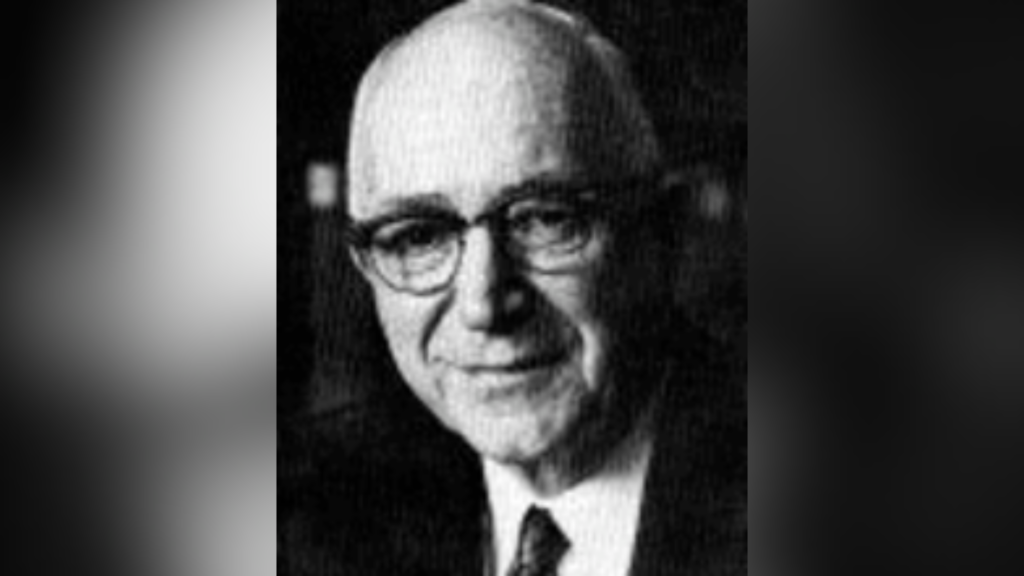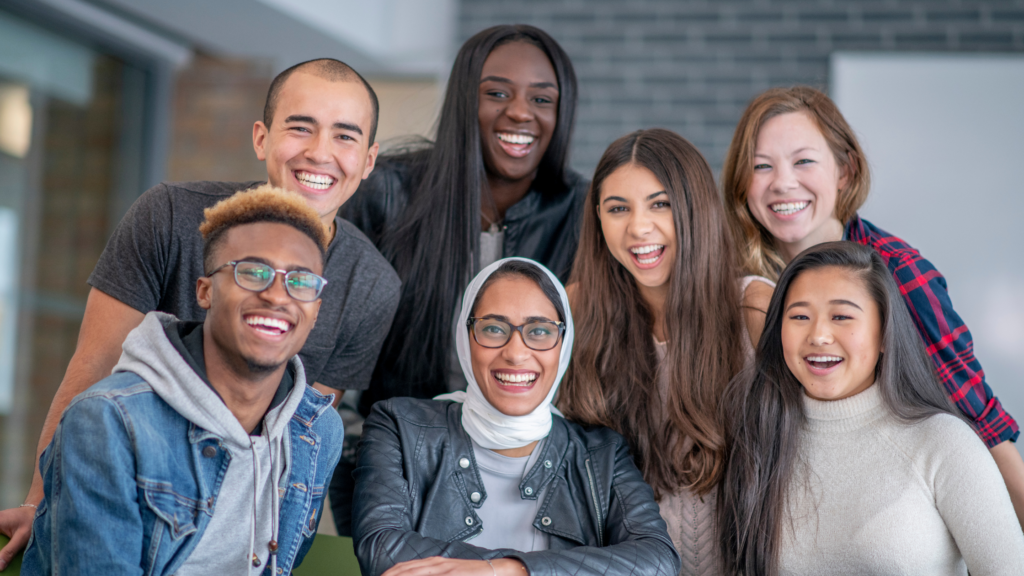Psychologist Gordon Allport founded the idea of Contact Theory, which suggests you can reduce intergroup conflict by creating connections between people from different communities. Essentially, through contact with others, we get to know one another better and discriminatory attitudes diminish. But there’s a catch – it doesn’t always work. American slave owners had lots of contact with their slaves, and Christians had centuries of contact with Jewish minorities in their towns but these interactions most certainly did not reduce conflict or discriminatory attitudes. Allport was wise to this and paid attention to how the type of contact really matters. Below, let’s explore the important learnings from this field and consider how we can make use of this in our schools, workplaces, and neighbourhoods.

Gordon Allport. Photo Credit: Dr. C. George Boeree, FAL, via Wikimedia Commons
The Original Theory
The basic idea is straightforward: we are social beings, and given an opportunity to connect with one another, we are more likely to understand the other person and to develop more positive and thoughtful views of others and the groups they belong to. But, per the slave example mentioned above, this is not always the case. Allport suggested that the context in which the contact occurs can have a huge impact. In particular, he emphasized four aspects:
1. Equal Status
There is contact in slave societies but the contact constantly reinforces the hierarchy. Ditto for Jewish-Christian contact in medieval Europe. Contact reduces prejudice when the populations have equal standing.
2. Common Goals
Contact leads to pro-social outcomes when the different people involved share a common goal. Put us on a single team trying to achieve the same purpose and we are more likely to develop positive attitudes toward one another.
3. Intergroup Cooperation
Results are best when both groups are working together and not in competition.
4. Support of Authorities, Laws or Customs
The surrounding cultural environment plays an enormous role. What do authorities say? What are the cultural and behavioural norms? Where cultural norms or authoritative voices countenance stereotyping, contact will not undermine these prejudicial attitudes.

Through contact with others, we get to know one another better and discriminatory attitudes diminish. | Photo credit: Canva.com
Updating with More Recent Research
This 1950s theory has held up quite well. However, more recent research has added some additional insights:
- Negative interactions were not initially studied enough. Research shows bad experiences can increase hostility and prejudice.
- Face-to-face interactions have the greatest impact and are more important than indirect information (e.g. portrayals in the media).
- When contact is created with people from other groups, people typically experience more positive interactions than negative ones.
- Research is unclear if negative interactions impact us more than positive interactions.
- Most interactions happen in unstructured environments like work, which (historically) has not been geared towards intergroup relations. To this end, researchers highlight that pro-diversity initiatives at work are really important.
- These interactions lead us to deconstruct some groups so that we see people more as individuals rather than simply part of a homogenous group. Simultaneously, they lead us to construct new groups as we more often consider the person we have encountered as part of “us.”
- Much of the benefit is from emotional connection. Informational understanding also helps, but forming connections yields the greatest gains.

Photo credit: Canva.com
Takeaways
There are several implications for us. Namely:
- Given North America’s growing diversity, we should think seriously and carefully about the environment in which interactions occur.
- Authoritative voices can do a lot to shape that environment. Employers, teachers, and politicians have a powerful ability to set the tone. Inclusive policies in workplaces and schools are a social good as well as likely to significantly impact the sense of belonging for employees or students. Communally, the social prestige of these institutional norms may carry over and benefit society in general.
- Most contact will foster benefits rather than harm. Thus, increasing contact is a worthwhile social goal (especially via face-to-face encounters). Mixed school classrooms and diverse work environments are a social good.
- Common goals pursued by diverse peoples creates connection. Sports teams are a great example. To this end, moves to ensure girls with hijabs can play soccer are important.
- Power imbalances can significantly impact the interactions meaning that’s it critical to have minorities in positions of authority or at least equal status. To that end, we want management to look diverse, teachers to be diverse, and our political leaders to reflect minority identities. Quebec’s policy of forbidding anyone with a turban or a kippah from beinga teacher, a police officer or a judge gives official backing to a social hierarchy that will affect how people are seen.
- Negative interactions matter and should not be ignored. Distressing events like the Israeli-Palestinian conflict impact people and can create negative interactions. It’s important therefore to respond to these events to ensure an inclusive environment is maintained for your staff or students.
- Visiting places of worship is likely to reduce prejudice. Such visits are usually positive emotional experiences, fostering warmth and beneficial memories. These visits also often feature minorities in positions of authority as they lead the group in environments the speaker knows well and where the group is uncertain and dependent on the speaker’s guidance.
At work, in school, and in our neighbourhoods, there is more and more intergroup contact. This can be a very good (even great) thing. But it requires intention to create environments where we all interact in positive ways that foster a sense of connection and understanding for everyone.





Hello Brian,
I love how the universe works. I was going to write to you and ask for a blog on this exact topic.
Recently I heard a white teacher-friend of mine talking about experiences with students of a different culture. The experiences are difficult and negative. The experiences are causing division and discouragement. There is a great chance this experienced and dedicated teacher will request a transfer next year, leaving with a negative impression of this particular culture.
I’m really sorry to hear that Julie. The environment in which contact occurs is really important. Principals, other teachers, even the community can do a lot to set tone. I wish your friend well whatever they choose to do.
You have a gift-the ability to distill complex issues into easy to comprehend, provocative morsels. Thank you for taking time to help us learn!! You are my favorite, geeky genius!!! ❤️
That is very kind of you Pam! Much appreciated! There’s so much good thinking out there and good scholarship so we try to find ways to bring that to others.